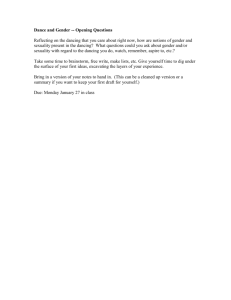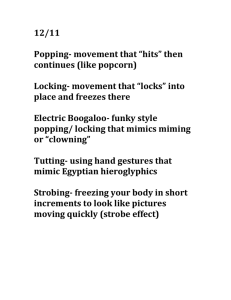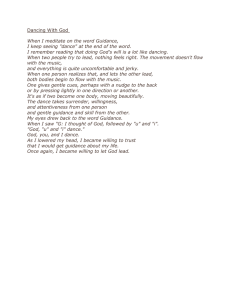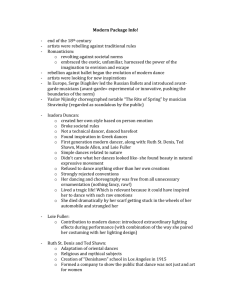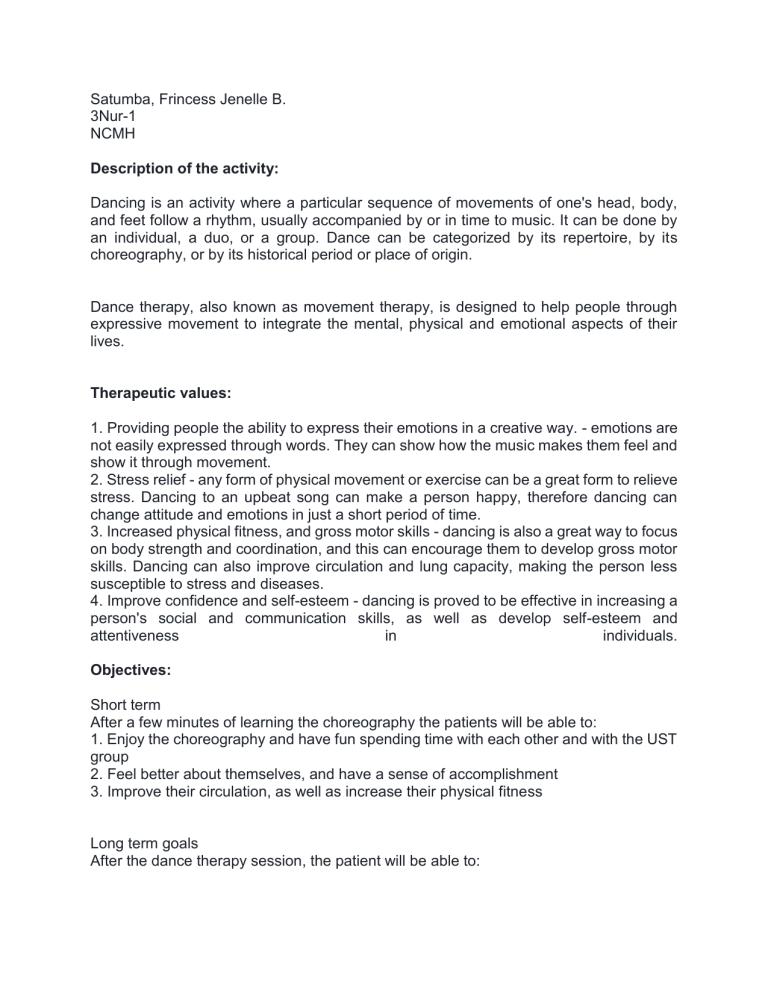
Satumba, Frincess Jenelle B. 3Nur-1 NCMH Description of the activity: Dancing is an activity where a particular sequence of movements of one's head, body, and feet follow a rhythm, usually accompanied by or in time to music. It can be done by an individual, a duo, or a group. Dance can be categorized by its repertoire, by its choreography, or by its historical period or place of origin. Dance therapy, also known as movement therapy, is designed to help people through expressive movement to integrate the mental, physical and emotional aspects of their lives. Therapeutic values: 1. Providing people the ability to express their emotions in a creative way. - emotions are not easily expressed through words. They can show how the music makes them feel and show it through movement. 2. Stress relief - any form of physical movement or exercise can be a great form to relieve stress. Dancing to an upbeat song can make a person happy, therefore dancing can change attitude and emotions in just a short period of time. 3. Increased physical fitness, and gross motor skills - dancing is also a great way to focus on body strength and coordination, and this can encourage them to develop gross motor skills. Dancing can also improve circulation and lung capacity, making the person less susceptible to stress and diseases. 4. Improve confidence and self-esteem - dancing is proved to be effective in increasing a person's social and communication skills, as well as develop self-esteem and attentiveness in individuals. Objectives: Short term After a few minutes of learning the choreography the patients will be able to: 1. Enjoy the choreography and have fun spending time with each other and with the UST group 2. Feel better about themselves, and have a sense of accomplishment 3. Improve their circulation, as well as increase their physical fitness Long term goals After the dance therapy session, the patient will be able to: 1. Feel a little bit more confident about themselves, as well as their social and communication skills 2. See and use dancing from now on as a way to relax their mind, to entertain themselves, and to improve the condition of their heart, lungs, muscles, and bones Venue: Pavillion 21, National Center for Mental Health Date: 01 February 2019 Time: 9:00 am - 10:00 am Materials: Bluetooth speaker, Spotify phone application Procedures: 1. The 9 patients will create 2 two parallel lines, facing the choreographer, 4 in the front, and 5 in the back. 2. The patient will follow and learn the steps of Treasure by Bruno Mars choreography for 30-45 minutes (with rest). 3. The patient will be grouped and perform the choreography together with their assigned student nurses. Evaluation/Limitations: 1. Some patients may be hesitant to engage in this kind of activity because they believe they cannot do it. 2. People with physical disabilities or handicapped such as limps, hearing problem, balance problem, or with severe limited range of motion. 3. Those individuals with extensive experience in dancing may not be able to let go of learned rules about self-expression and may be inhibited in their spontaneity in therapy when asked to express themselves in their particular medium. 4. Positive reinforcements: 1. The choreographer recognizes when patients are doing well and gives them feedback accordingly such as phrases like “that was correct,” or “you did a great job.” 2. Smile, a thumbs-up or nod to someone when he is trying really hard. The small gestures of praise are often the most effective. 3. Pinpoint who is the worthy recipient, have them come to the front together with the student nurse, and have everyone clap or cheer. 4. Snacks after the therapy.
